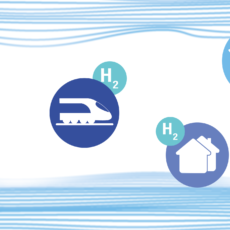We previously examined the basics of an average American footprint. But we can assume most people don’t live the basic life. Let us take a look at other things that may increase the size of our footprint.

Pet ownership has been put under scrutiny by several sustainable living specialists, however the various studies have large discrepancies on the final figures. What we can tell you is that the larger the pet, the higher the carbon footprint will be. Larger meat eating dogs would appear to have high footprints but then most dogs tend to encourage low carbon activities like walking and encourage less long distance travel for holidays, like taking high carbon producing flights. Until more research can be done on this, we will say the jury is still out.
Air travel is one of the highest energy consuming travel options available. The shorter the flight, the larger the impact due to the high thrust requirements of take off. Astoundingly though, 1 in 5 Americans haven’t been on a plane.
In 2015, the total energy spent on non-military aviation in the US was 1551.7 TWh. That is 3 times the amount of renewable energy that was produced last year or more than half the total amount produced from power plants. Only 33% of this energy is attributed to commercial, the rest is from general aviation (private planes), air taxis, and cargo flights.
There were 895.5 million passengers who averaged 1,439.4 miles per trip. This gives us an average of 0.4kWh per mile for each passenger. Now we all know that not all passengers are created equal. Some have extensive room in first class, others bring extra baggage, and the airlines themselves only had a load factor of 82.7 in 2015. But for a generalization we can say that on average you will be responsible for 0.4 kWh per mile over your trip.
Taking in the average distance (1,439.4 miles equivalent of flying Denver to Chicago) we can say the average holiday on an airline per passenger consumes 1140 kWh. That is around an acre of trees required to remove your carbon footprint.

What about using alternate transport to reach your destination:
- Driving = 1.7 acres of forest for carbon sequestration
- Train = 0.56 acres
- Coach = 0.3 acres
So while taking the car is not going to be any more economical than flying for the longer trips, there are alternatives that can be.
What else can help to reduce our energy consumption? How often do you visit your local farmers market for fruit and veggies? Supporting your local farmers will also considerably reduce your footprint. By using more organic methods to grow, traveling a shorter distance for distribution, not using a full time store front to sell and the environmentally friendly packaging, in most cases the produce will use less than half the energy consumed by larger retailers. Not to mention the savings of not being tempted on out of season produce! These are a few examples of things in our daily lives that contribute to your carbon footprint but let us know if there is anything else you are curious about.



